The Panama Canal
By Dante Massaro
January 3, 2014
Table of Contents
(Chapter 1)______________________________________(What is the Panama Canal)
(Chapter 2)________________________________(Why the Panama Canal Was Built)
(Chapter 3)___________________________________________(The French Attempt)
(Chapter 4)____________________________________________________(Sickness)
(Chapter 5)___________________________________________(The U.S. Took Over)
(Chapter 6)_______________________________________________(My Experience)
(Chapter 7)_________________________________(The Future of the Panama Canal)
(Chapter 8)________________________________________________(Photo Essay)
(Bibliography)______________________________________________(Bibliography)
Introduction
What is 50 miles long, connects two oceans and has the only river in the world that flows into two different oceans? Yep, you guessed it, The Panama Canal. My report is about the Panama Canal. I will be talking about the history, why it was built, my experience and the future of the Canal. I also include photos at the end. I took a lot of time putting this report together. I would like anyone who reads this to pay attention but most of all enjoy reading this report. Have fun and learn a lot!
Chapter 1
What is the Panama Canal?
The Panama Canal is a canal across the Isthmus of Panama. Panama is in Central America. The Isthmus is 50 miles wide. At first the Canal was going to be a sea level canal because the French wanted to do it like the Suez Canal, which is a sea level canal. When the Canal was finished by the Americans, it created the largest man-made lake and reservoir at the time, Gatun Lake and Gatun Reservoir. Gatun is pronounced (Gat-oon).
The Panama Canal has three sets of locks. Each lock chamber is 85 feet wide and 1,000 feet long. The locks are on both sides of the Canal with Gatun Lake and Reservoir in between the locks. On the Atlantic side, there are the Gatun Locks. On the Pacific side there are the Pedro Miguel and the Miraflores locks. The locks work by raising ships so that they pass over a lake and lowering them down again to sea level. No matter which way you go the process is the same. The reason the Canal needs locks in the first place is because they have to raise ships over the mountain. The Canal was built between lakes so it wouldn’t be as much digging.
Chapter 2
Why Was the Panama Canal Built?
The Panama Canal was built to be a shortcut between the Atlantic and Pacific Oceans. One of the reasons the Panama Canal is so important is because the shipping industries were getting larger. Before the Panama Canal was built, there were three ways to get to California from New York:
(1) You could go around Cape Horn. Before the Panama Canal was built, the clipper ships had to go around Cape Horn which is very dangerous because of the strong currents, big waves, strong winds and ice bergs. It also took a lot longer.
(2) You could go on a ship to Panama, walk across the isthmus then take a ship to California.
(3) You could take a ship to Panama, take a train across the isthmus then take a ship to California. The Panama Canal railway was used by the 49ers to go from New York to California so that they could try to make their fortunes in gold.
It is 13,000 miles to round Cape Horn from New York to California. It only is 5,200 miles to cross the Panama Canal from New York to California. When I looked at the rocky hills and the lush rainforest terrain, I saw just how hard it was to build the Canal. I went to Panama from southern Mexico. And it took ten days. Imagine how long it would be to go all of the way around Cape Horn. We buy things from all over the world and chances are those things would be more expensive. Like this computer, it was probably made in China so without the Canal this computer would have been more expensive. The Canal is one of the coolest modern wonder of the world. That is my opinion.
Chapter 3
The French Attempt
The French started 1881 and the work was suspended may 15, 1889. Eight years after the French started they went bankrupt and when they went bankrupt it had cost 22,000 lives building the Canal. By the time they went bankrupt they had excavated 150 million cubic feet of mud. They had used an equivalent of about 287,000,000 U.S Dollars. They wanted to do a sea level Canal like the Suez Canal built by Ferdinand de Lesseps. Ferdinand De Lesseps was in charge of building the Canal. The Suez Canal is in the desert. Since the desert is flat, he was able to do a sea level canal. However, Panama is in the rainforest and it has mountains in between the two coasts, so when trying to build the Panama Canal they had to move more dirt than they accounted for.
One group of surveyors went on a survey and it took them a few weeks to get across the 50 mile Isthmus of Panama. They were getting swarmed by mosquitos and other insects. They all survived and they said it was the hardest survey of their lives. When the French started they had hardly any study of the hydrology and the geology. Geology is the study of the earth. Hydrology is the study of water. The men who designed the Canal had hardly any experience in designing. The Canal was being cut through mountains so they had to destroy mountain tops so there wouldn’t be any landslides. When they would excavate they would do it at such a steep angle that they would cause landslides. The landslides poured in almost as much in as they dug out. Steam shovels had been invented but they were very primitive. The steam shovels and other metal equipment rusted very fast because of the weather. The French had a tough time building the Canal because the mosquitoes caused health risks because they carried diseases like Yellow Fever and Malaria. In 1894 another French group was assigned to take over. The group only had a few thousand people working. They only used $109,000,000 dollars. The French ended up failing to build a sea level canal because of the terrain, diseases and accidents that killed a lot of their workers.
Chapter 4
Sickness
Many people died building the canal, most of which were from sicknesses. The workers who died in such large numbers didn’t have proper burials; they were buried in trenches.
Malaria
When the French were building they didn’t know that mosquitos caused Malaria. They thought it was caused by the air. Malaria means bad air in Italian. The hospitals had ant problems so they didn’t want the ants to get into the patients beds. They put the bedposts in water so the ants couldn’t get into the beds. Mosquitos spawn in water so the pools were just causing the malaria to spread faster. The symptoms of Malaria begin at an 8 to 25 days. However to those who take medicines for malaria will not get sick as soon. Malaria’s symptoms are flu like. So Malaria feels like a really bad case of the flu.
Yellow Fever
Yellow fever is a hemorrhagic virus (which means internal bleeding from leaking blood vessels.) Yellow fever is also known as Yellow Jack or Bronze John. Yellow Fever is caused by female mosquito bites (the Yellow Fever mosquito). The scientific name for mosquito is Aedes Aegypti. Symptoms begin in a range of three to six days. Most of the time it causes, fever, headaches, chills, back pain, loss of appetite, nausea and vomiting.
Typhoid Fever
Typhoid is a common worldwide disease. Typhoid is also known as Typhoid Fever, Gastric Fever, Abdominal Typhus, Infantile Remittent Fever, Slow Fever, Nervous Fever or Phytogenic Fever. It is transmitted by the indigestion of contaminated food and water. It contains the bacterium Salmonella Typhi. The beginning to typhoid has four different stages, each taking one week. These symptoms are fever in the first week in the second week the patient lies with a high fever around 104F.
These are all of the common sicknesses that people got building the canal. More people died because of sickness than building accidents. If it wasn’t for the canal we would not have found out how to cure Malaria and Yellow Fever as quickly.
Chapter 5
The U.S. Took Over
The U.S. took over May 4, 1904, 15 years after the French started. We completed it August 15, 1914. It took ten years just to finish the canal. John Friday Wallace was the designer of the Panama Canal. On January 22, 1903 the treaty for building the Panama Canal was signed. It gave the U.S. a lease to build the canal. A nickname for this lease is the 99 Year Lease. The lease was signed by Theodore Roosevelt. The senate of Columbia did not approve. The Panamanian government was in a war with Columbia. During 1905 a U.S. engineering panel was ordered to check the canal’s design. They saw that the French had attempted to build a sea level canal. But the technology that the U.S. had was better than what the French had. So they could use a lock system. They also knew that because when the French were digging out the canal there were landslides that caused the parts they had dug out to refill again. So that helped determine that they would do the locks. The lock system would raise and lower ships to and from what were the largest manmade reservoir and lake, Gatun Lake and Gatun Reservoir. The U.S. upgraded the old French equipment with new equipment. They brought railroad mounted steam shovels and giant hydraulic rock crushers. They also brought cement mixers, dredges and pneumatic power drills. William C. Gorgas was the chief sanitation officer. He figured out how to prevent some of the sicknesses I mentioned in the previous paragraph. The U.S. was not only successful because they figured out how to prevent sickness, they also successful because they built a lock system.
Chapter 6
My Experience
I woke up to the roar of the engine. My dad had just come back from picking up our line handlers. I stayed in bed for a while until I got cold. I went to go get a shirt when everyone was up above. We had to call the signal station to find out where to pick up our advisor. After that we started into the Canal. We passed under the Bridge of the Americas. We kept going until we reached the Miraflores Locks. (A lock is a narrow channel with two gates in front and two in back.) We went into the lock and watched the gates close. We were behind a gigantic cargo ship. A stork landed on the rudder. We were tied up next to a ferry. Then the water level started rising. Our cameras were rolling. The gates opened and the cargo ship in front of us started to move. Then we went into the next lock and watched the gates close. Then the water level started rising. My Gopro was filming. The gates opened and the cargo ship in front of us started to move. Then we went to Miraflores Lake. When we got to the Pedro Miguel Locks. After that we started into the Culebra Cut. (The Culebra Cut is a cut straight through a mountain. Most of the workers who died of building accidents died building the Culebra Cut). We saw a crocodile. Then we got to Gatun Lake. There was a little bit of wind. It was about 25 knots. We saw a few islands. Then we got to the Gatun Locks. We went in before the cargo ship this time. The water level started to lower until the bell started to ring. Then the gates opened and we went out we docked and the gates closed. The water level lowered. Then we went out after the bell and the gates opened. Then we locked down a third time and the cargo ship was still behind us. The gates closed behind us and the water level started lowering. Then the bell rang and the gates opened and we were in the Caribbean!
The experience of the canal was very interesting. I learned a lot about the Canal during the making of the Panama Canal report. I appreciate how much effort was put into the Panama Canal. I also appreciate how much it affects our shipping industries and the things that we buy.
Chapter 7
The Future of the Panama Canal
The Panamanian government is making a fourth set of locks. They are making a wider channel for larger Post-Panamax ships. Panamax means that the ships are built to fit in the locks. Post-Panamax means that they are built to fit into the new locks. There are already three sets of locks. They are making the fourth set of locks where the French started digging. The new locks will ascend from the Caribbean Sea to Gatun Lake. The old locks will not be replaced.
The new set of locks will be 180 feet wide for the larger Panamax ships. The new locks will be 1,400 feet long. The cost that we estimated is 5.25 billion dollars to build the new set of locks. The new locks will have a capacity of 600 tons. The Panamanian government thinks it will be complete in 2015.
The locks are expected for traffic also in 2015. On September 3, 2007 thousands of Panamanians watched a huge explosion that was the first step for the expansion program. The new locks are going to slide back like a sliding door. They’re not going to swing like double doors. The expansion project was supposed to be completed in 2014.
Since a lot of workers have been going on strike, the canal authority predicts that the Expansion Project will be complete in 2015 instead of 2014 as originally planned 2014 is the 100 year anniversary of the completion of the Panama Canal. The new locks will be so big that if you put The Empire State Building on its side it would fit in the lock with ease.
Chapter 8
Photo essay
This is me and our “admeasurer” Joseph. Joseph came to our boat to measure it and make sure it was safe to pass through the Panama Canal. After he inspected it, he gave us a ship identification number to pass through the canal. Joseph said that the most interesting thing about the canal is the people that he meets.
This is me and my dad at the Miraflores Visitor Center. This is a museum next to the Miraflores Locks. We went to visit this museum before we passed through the canal. We saw a big cargo ship pass through the locks when we were there.
This is our crew for passing through the canal. We had one pilot “advisor” named Frank (he is in the green shirt.) Frank made sure we passed through the canal safely. The other four people are our “line handlers” and they help us with holding the lines when we go through the locks. I’m in the middle with my mom.
This is me in the Miraflores lock. We are tied up next to a ferry. In front of us is a cargo ship.
This is part of the Culebra Cut. The Culebra cut is a cut through a mountain.
This is Gatun Lake. We are passing next to a train bridge. It was a little windy. The locks on either side will bring you up to the lake which is 85 feet above sea level.
This is me and my parents in one of the Gatun Locks. We are tied up to the same ferry.
This is one of the sets of Gatun Locks opening so that we can go into the next chamber. Usually there are only one set of double doors.
This was the big tanker ship behind us in the Gatun Locks. It felt like we were going to be a Benevento pancake.
This is me trying to hold the gates closed! It was really hard.
These are the new gates for the new sets of locks that are being built.
Carlos, one of our line handlers who is an expert on the Panama Canal, said that you can fit the Empire State Building inside each of these gates.
This is the path our boat took through the Panama Canal.
Here is a cake me and my mom made of the Panama Canal. We passed through the Panama Canal, and now it can pass through us!
Bibliography and Sources
- Wikipedia
- Guide to the Panama Canal by Ediciones Balboa
- Official Panama Canal website: pancannal.com
- Internet articles:
- megaengenharia.blogspot.com
- http://everydaylife.globalpost.com/important-historical-panama-kids-13630.html
- Google Earth
- The Panama Canal Museum, in Panama (Miraflores Visitor Center)
- Interviews:
- Taxi driver Rodrigues
- Carlos, one of our line handlers
- Joseph, our admeasure
- Panama Caribbean Treasure, The San Lorenzo Protected Area, Leslie F. Larson
Search
Recent Posts
- HumaNature Podcast Episode 28: Things That Go Squeak In The Night September 27, 2017
- On The Run Podcast – Jennifer Massaro: Sailing the World, Facing Her Fears September 22, 2017
- 5 Tips that Will Make You a Better Storyteller September 10, 2017
- Breaking Free From Your Mooring: Our TEDx Presentation August 12, 2017
- Come See Us at TEDx Los Gatos High School! April 15, 2017 April 3, 2017
Categories
- Dante's Dory (22)
- In The News (12)
- Sailing (91)
- School Projects (15)
| M | T | W | T | F | S | S |
|---|---|---|---|---|---|---|
| 1 | 2 | 3 | 4 | 5 | 6 | 7 |
| 8 | 9 | 10 | 11 | 12 | 13 | 14 |
| 15 | 16 | 17 | 18 | 19 | 20 | 21 |
| 22 | 23 | 24 | 25 | 26 | 27 | 28 |
| 29 | 30 | |||||
- On:
- In: Dante's Dory, Sailing, School Projects
- Comments (2)

Previous post
Lock N’ Roll – Transiting the Canal Sea to Sea.

Next post
Sailing to Panama – Day 10
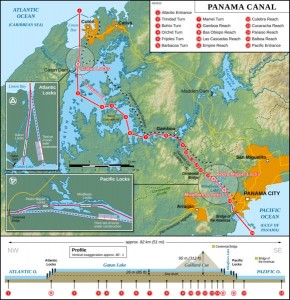



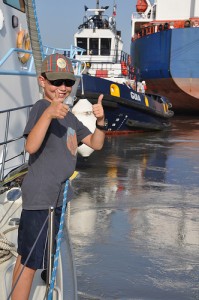
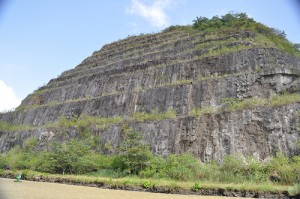



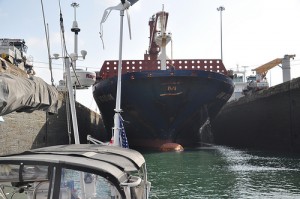

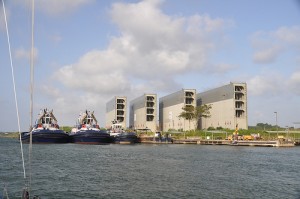
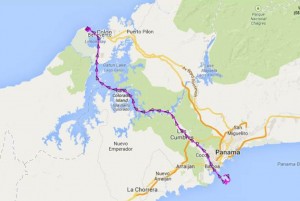

2 Responses to The Panama Canal
Dear Dante,
It looks like you are having a great time. I very much enjoyed your report about the Panama Canal. It is well done. It reminded me of things that I already new and I learned some new things too.
I’ll remind you of who I am. I am Matthew’s grandfather’s wife. We have Soldier the dog. I check your web site often to see how the voyage is going. I wish you all well.
Safe travels!
Best,
Terri Rose
Great job Dante. I look forward to your Posts. It’s almost as good as being there.
Comments are closed.